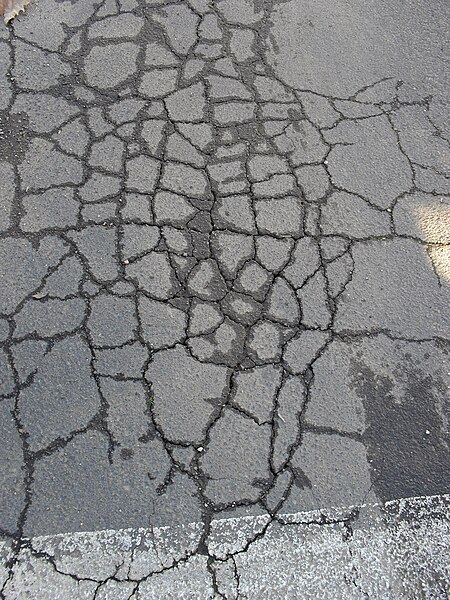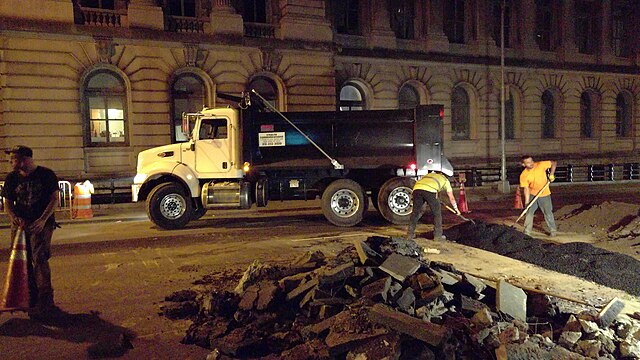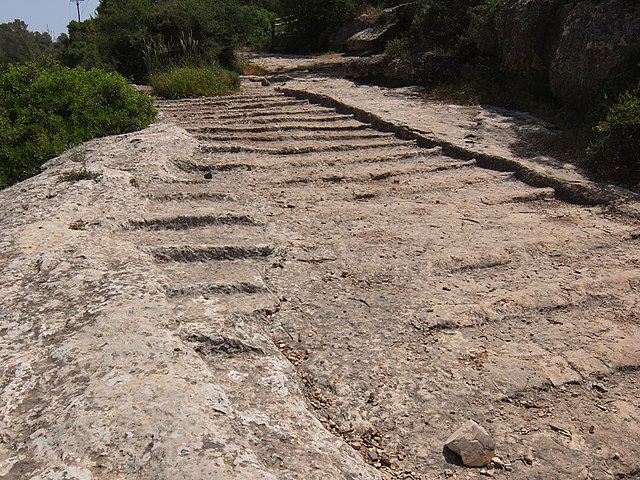A pothole is a depression in a road surface, usually asphalt pavement, where traffic has removed broken pieces of the pavement. It is usually the result of water in the underlying soil structure and traffic passing over the affected area. Water first weakens the underlying soil; traffic then fatigues and breaks the poorly supported asphalt surface in the affected area. Continued traffic action ejects both asphalt and the underlying soil material to create a hole in the pavement.
A deep pothole with a nearby patched area on New York City's Second Avenue
Crocodile cracking showing moisture seepage, a sign of a weakened soil structure beneath the failed asphalt
Detail of pothole, showing presence of water in soil structure, on a road in Montréal, Québec
Example of a pothole reappearing on a newly patched roadway, also showing the transition between crocodile cracking and the pothole, with water dried up, in a road on the Isle of Wight
A road surface or pavement is the durable surface material laid down on an area intended to sustain vehicular or foot traffic, such as a road or walkway. In the past, gravel road surfaces, macadam, hoggin, cobblestone and granite setts were extensively used, but these have mostly been replaced by asphalt or concrete laid on a compacted base course. Asphalt mixtures have been used in pavement construction since the beginning of the 20th century and are of two types: metalled (hard-surfaced) and unmetalled roads. Metalled roadways are made to sustain vehicular load and so are usually made on frequently used roads. Unmetalled roads, also known as gravel roads or dirt roads, are rough and can sustain less weight. Road surfaces are frequently marked to guide traffic.
A road being resurfaced using a road roller
Red surfacing for a bicycle lane in the Netherlands
Construction crew laying down asphalt over fiber-optic trench, in New York City
Old Roman road, leading from Jerusalem to Beit Gubrin, adjacent to regional highway 375 in Israel








